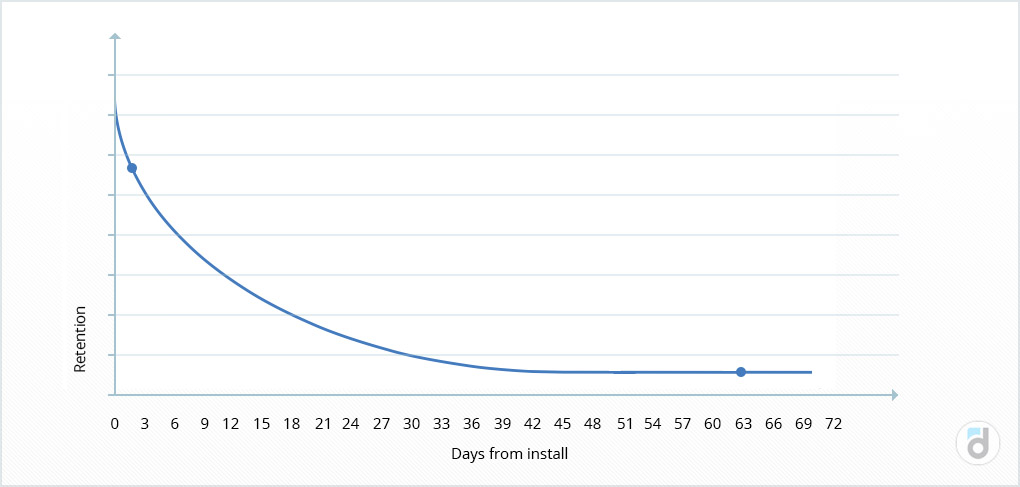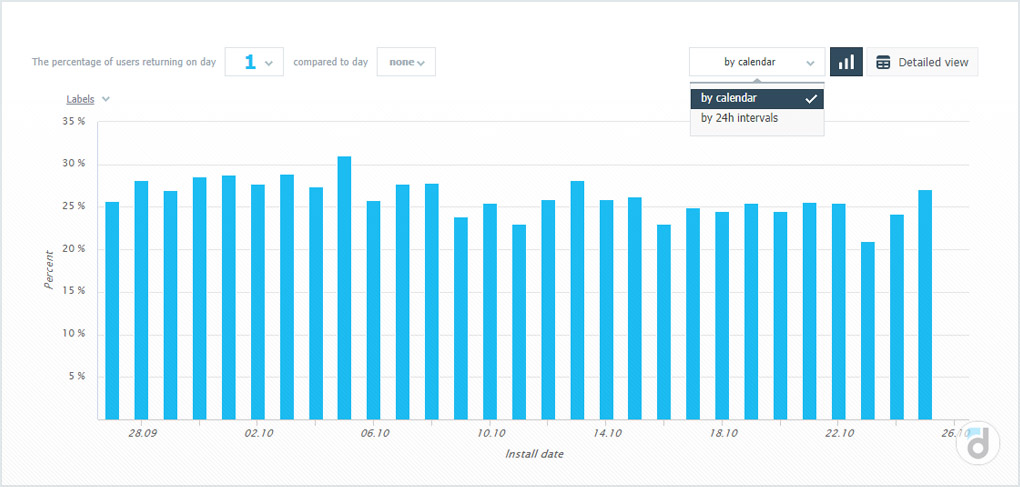The main questions about retention: what is it, why you should know about it and how to increase it. devtodev analyst talks about this academically, but in an accessible way Vera Karpova in a new article in our series of materials “Performance indicators of games”.
The publication is published as part of a series of materials about game metrics from App2Top.ru and devtodev. Articles are divided by seasons, each of which is dedicated to a specific topic. The second season is called “Users”. In it, we talk about those business metrics that reflect the effectiveness of the application in terms of working with the audience.

Vera Karpova
In order for a project to generate revenue, there must be paying users in it.
In order for there to be paying users, there must be some kind of audience in the project, part of which will pay.
To have this audience, new users should be interested in the project and return to it as long as possible.
How long users return to the project is determined by such a metric as retention.
It is calculated for cohorts on a certain day from the moment of installation as follows:
Retention N = Number of users who logged in on day N / Number of users who installed the app N days ago * 100%
Strictly speaking, the metric shows what percentage of users logged into the application on the nth day after installing the application.
Let’s take an example: let’s say, on January 1, 2017 (01.01.2017), 1,020 people launched the application for the first time.
Next, we look at how many of them entered the application in the following days and calculate the retention according to the formula specified above.

Most often , the retention schedule looks like this:

The largest outflow of users occurs in the first days after installation, then the retention rate decreases, and those users who log into the application at the end of the month most often stay in it for a long time.
Retention is usually monitored not for every day, but on the 1st, 7th and 28th days. Traditionally , good indicators are considered:
- Retention 1 – 40%
- Retention 7 – 20%
- Retention 28 – 10%
The retention of the 1st day indicates the user’s first impression of the project, his reaction to the interface, the convenience of the application and compliance with expectations and tasks. In addition, the retention of the 1st day affects the retention of subsequent days, so this indicator should be given a lot of attention. On the first day, it is necessary to ensure that the user understands the product, understands its value, essence and advantages (this is called activation).
It is with activation that the user’s immersion in the project begins, an immersion that, ideally, should lead to the purchase. There is even a scheme that clearly describes the scenario that the user must follow from installation to making a payment:
Installation -> activation -> return -> making a payment
In order for this chain to work in practice, during the first session it is necessary to “hook” the user so that he wants to use the product again, which will help with a deep analysis of the first session.
By the 7th day, the user gets to know the product better. The retention of the 7th day indicates whether users like the application.
In 28 days, the user must fully get used to the project, get used to it, and start using it with a certain frequency. And it is these users who most often stay in the product for a long time. So holding the 28th day demonstrates whether your application or game is capable of becoming a habit for the user.
It is worth remembering that retention strongly depends on the type and genre of the application.
For example, social networks are checked every day, and many people use the taxi service no more than several times a week or a month. Therefore, the retention of such applications will be different and, based on the specifics, it is worth determining which retention period should be monitored most closely.
There is another way to work with retention: count it not by calendar days, but by hours. This means that the retention of the 1st day is the percentage of users who returned to the product within 24-48 hours from the moment of installation.
Here’s what it looks like in devtodev:

Let’s see how this can affect the result.
On the timeline, the dots indicate user sessions. If we count the retention by calendar days, then the user will be counted as returning in 1, 2 and 4 days from the moment of installation. But if you use the calculation by the hour, then the first 2 sessions will fall on the same day and as a result, the user will be counted as returning on 1 and 3 days from the moment of installation.

This calculation makes sense if users are dispersed across different time zones and they have a calendar day with a difference of several hours. In this case, for example, an increase in traffic in one country may change the retention rates of the first days.
Also, this method allows you to calculate another metric – zero-day retention. It reflects when users log into the product on the same day that the installation was made.
It is also worth segmenting retention rates when analyzing by traffic sources, country, platform and other criteria, since the behavior of users of different categories may differ. This will be especially useful when evaluating traffic sources to identify the most effective, because users may have different ideas about the application when switching from different sources. Accordingly, they may have different expectations. This may affect retention rates, may be a signal to change the audience to which the advertisement is displayed, or to change the presentation of the product.
Why do I need to monitor retention and try to increase it?
Retention affects the size of the audience.
Do you want the audience to get bigger?
Then you have an outflow of users from the product should be less than the influx.
If new users constantly come to the application and do not linger in it, then there will not be a stable audience in such a project. Plus, if the audience of the project consists mainly only of new users who will soon leave the project, then it is unlikely that the project will be successfully monetized.
Retention also affects income: the longer the user is in the project, the more loyal he becomes and the more likely he is to make a payment. If the product provides for small but constant payments, then the longer the user uses the product, the more he will make these payments. Plus, if your program is monetized through advertising, it means that every visit brings you money. The longer each user visits you, the better it is for you.
It is convenient to compare this indicator for different cohorts in order, for example, to assess the impact of changes made in the product on user behavior

Retention is used to calculate metrics such as Lifetime and Lifetime value (LTV = ∑ retention * ARPDAU), which are the most important metrics for any project, determine its success, allow you to identify the most effective channels of attraction, find financially attractive user segments
How can retention be improved?
- As mentioned earlier, the first session largely determines the subsequent behavior of the user and it is at this time that the essence of the application needs to be conveyed to him as quickly as possible. To do this, you can use a tutorial that will clearly demonstrate the functionality of the product to the user.
- Sometimes, in order for users to return to the project, they need to be reminded about it using various notifications: push notifications, email messages, and the like.
- Bonuses and gifts that the user will periodically receive while working with the application can contribute to his interest in the product, influence the desire to enter it again.
- You can maintain the user’s interest by gradually opening up new content to him, regularly setting goals and objectives for him.
- The division of the common path to the goal into stages can contribute to engagement, so that the user feels progress and enjoys achieving or completing each step.
- Connecting with social networks and interacting with friends within the product will create great affection and interest.
You can also increase retention in the following way: first, study the behavior of users who remained in the project (their sessions, sequence of actions, use of functionality), and then conduct new users this way.
Conclusion
Retention is one of the most important metrics of a product, because it determines the size of the audience and the possibility of company growth, tells about the user’s first impression of the product and determines how much time he will spend in the application on average, which directly affects revenue. Therefore, retention is one of those metrics that you should pay special attention to, constantly monitor and improve.
Read also materials about other metrics:
- How to make the first session better: working on keeping the 1st day
- Learning how to work with the consumer basket (another way to improve monetization)
- Segmentation of paying players
- Lifetime
- Stickiness
- Conversion Funnel
- Outflow of users
- Total daily play time
- Average session duration
- Social LTV
- Downloads
- Active Users (DAU/WAU/MAU)
- K-factor (virality)
- Loyalty
- The first season of “Performance Indicators of games” has ended

